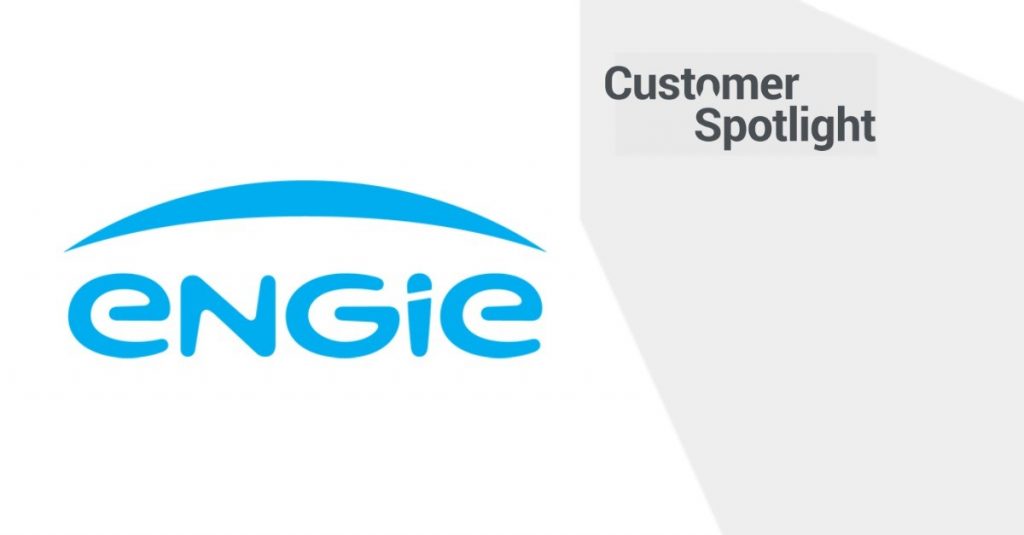ENGIE GROUP is a global leader in innovative, low-carbon energy and services. It is France’s largest producer of onshore wind and solar power and leads Europe’s underground natural gas storage.
Beyond that, inspired by a purpose (“raison d’être”), ENGIE reconciles economic performance with a positive impact on people and the planet, to offer competitive solutions to its customers.
Centralizing and cataloging APIs
When ENGIE chose Axway’s Amplify API Management Platform, it needed to solve a pain point: it already had APIs in use around the group, but these needed to be detectable and usable company-wide.
Future innovation depended on the energy company’s ability to centralize as much internal and external data as possible and then share it flexibly, efficiently, and securely with internal and external teams.
Data-driven innovation is a key driver in reaching ENGIE’s goals, and that meant restructuring toward an API-first business model.
“All the different aspects of our transformation have one thing in common: they involve better sharing of data. Data must become a shared asset so we can maximize its business value,” said ENGIE Chief Data Officer Gérard Guinamand.
As part of its profound transformation since 2016, ENGIE built a Common Data Hub on Axway’s Amplify Platform, an API marketplace on which to publish documentation on all APIs across all business units and enable business users to register for access to their chosen APIs.
This “portal of portals” would ultimately make it easier to bring in external data, and to share data with external partners and customers.
“Our Common Data Hub enables us to gather, store, and enrich the group’s data, which we then need to share as widely as possible. This challenge inspired us to become an API-First, data-driven enterprise,” added Guinamand.
Making APIs available throughout ENGIE
As a result of this centralization, ENGIE has been able to open up its API portal to all entities within the organization, whether it’s business players who can leverage business value from the existing setup, understanding what each API does, and how it’s useful to different business units in meeting their own challenges, or to developers who can then reuse API code to accelerate time-to-market of their new solutions.
See also: 6 ways to enhance the API developer experience with an API marketplace
The openness of Axway’s Amplify API Management Platform was an important factor in ENGIE’s choice because it needed to be able to leverage existing APIs within the organization that was built using other platforms.
And a key objective was to allow business units to keep their preferred API management tools. The Amplify platform allowed each unit the independence they needed while centralizing and exposing the group’s APIs globally.
“It’s not just talking about best practices in meetings, it’s sharing global ‘bricks’, building blocks that facilitate our cross-functional vision and that stand out because they are well-designed and are a common denominator between Business Units,” explained Guinamand.
One major success is Weather Standard Solution, an API that centralizes access to meteorological data. Understanding the weather helps develop algorithms for predicting who consumes and generates energy, and when.
Previously, each of ENGIE’s 26 business units might have had its contract with the same data provider. With Weather Standard Solution as a standard API, incoming information goes into the Common Data Hub, so each unit can automatically pull the data from the same place without having to buy it a second time.
As a result, ENGIE now makes three times fewer requests to weather-data providers. And this doesn’t just save money, it also gives the group a large amount of centralized data for research and analysis.
Opening APIs to a growing ecosystem
Performance also means operating within an ecosystem of external partners and clients. Amplify API Management Platform is giving ENGIE a comprehensive, cost-effective, flexible, and secure environment that they can scale up or down as needed.
ENGIE now collaborates faster and more securely with external partners, where they are often providing only parts of their environment. APIs serve as functionality “bricks” that customers can easily assemble into their own solutions. The API-first model allows the group to offer its services as more modulable, interconnecting units.
ENGIE’s mission is to accelerate the transition towards a carbon-neutral economy through reduced energy consumption and more environmentally friendly solutions. It’s accomplishing this thanks to a data-driven vision based on three pillars: API-first, cloud usage, and ENGIE’s Common Data Hub platform.
Treating energy as a service means ENGIE can take its environmental goals to the next level by securely expanding its services to an ever-growing ecosystem of partners.
Register today to watch our webinar and hear from our experts at ENGIE, Gerard Guinamand, Group CDO, George Mironescu, Application Delivery Practice, IDC, and Jana Frejova, Senior Product Marketing Manager at Axway how 301 leading enterprises beat complexity to speed up innovation.
